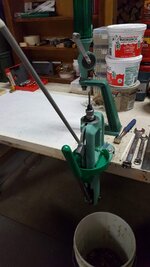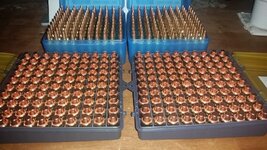Bronze Supporter
- Messages
- 19,725
- Reactions
- 55,073
- Thread Starter
- #21
Yes, but dribble it in gradually and give it a few minutes to mix in. If you add too fast you may get cases or primer pockets packed. Not a big deal but an annoyance. Nu-finish works great all right.
I
Depends on how shiny you want. I have found that just using the walnut works great for me even with the rouge in it.
All I have used so far is the CC media, what size do you use coarse med or fine? Harbor freight has it in bulk.














